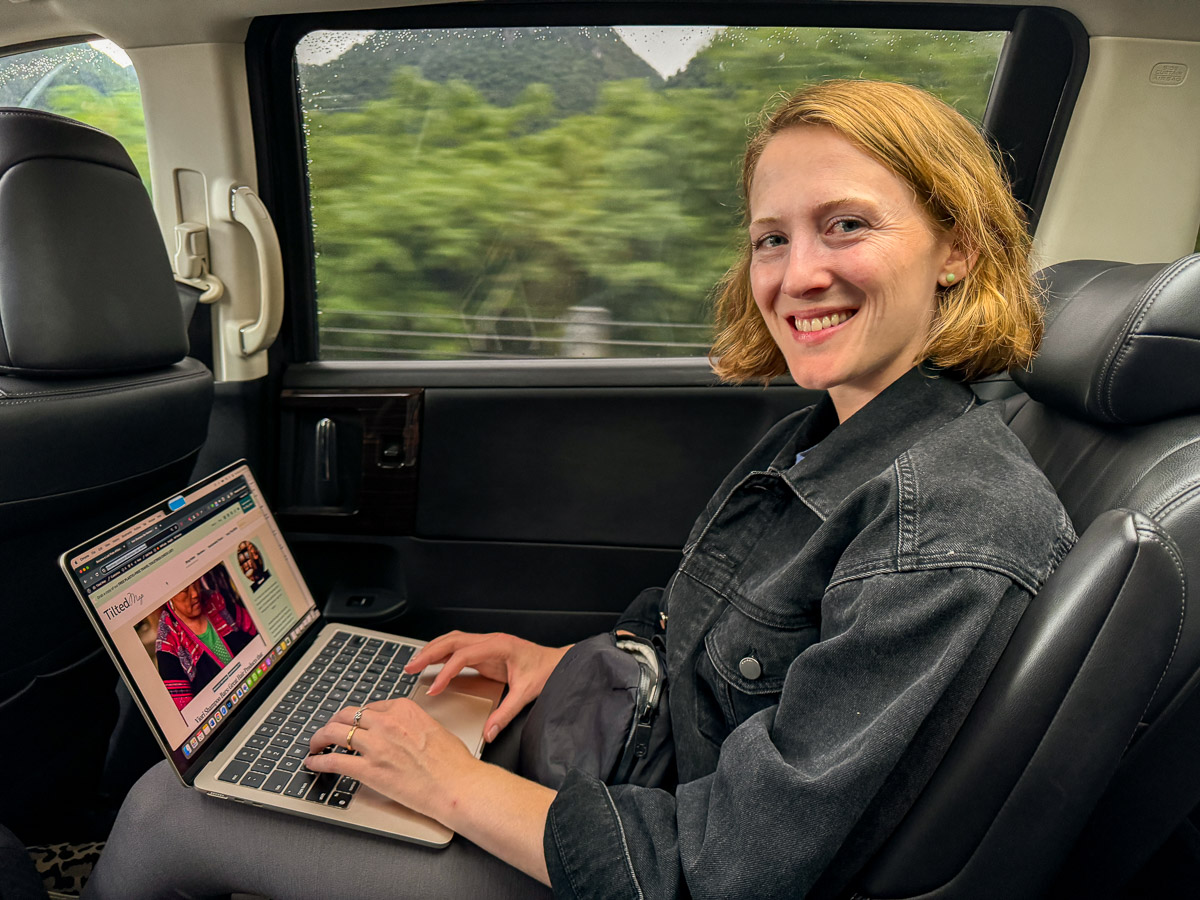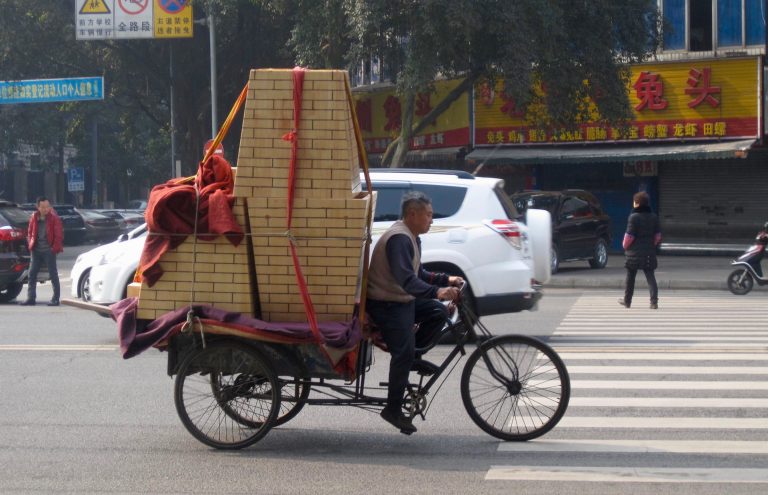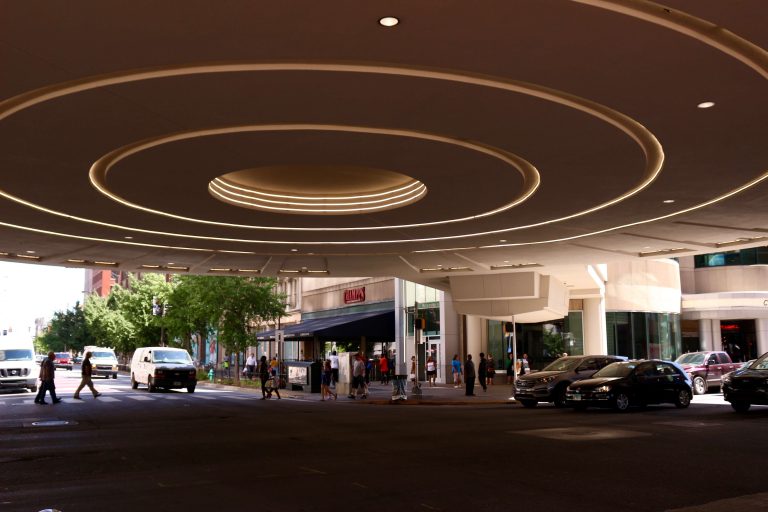What are Affiliate Links, How do Blogs Make Money & How Should You Support Your Blogger Friend?
Are you curious about how blogs make money, but you want an answer written for non-blogger people, not for people who want to make money on the internet? I’ve got you. This is my honest take on how the blogging business works, after about a decade working in. Nothing held back, just the truth, including how you can support my work, or the work of any other blogger or influencer you might appreciate.
Hi, nice to meet you!
If you’ve ever read a travel guide or product review on this blog, you might have noticed the affiliate disclosure at the top of the article. It’s just under the title, the date, and the author’s name (that’s me, Ketti Wilhelm. Hi!)
I’ve been blogging since I moved to China in 2014, and started trying to make money blogging in 2019. (So I could afford my favorite hobby, and spend more time on it.)
It was a slow road at first, but after countless hours reading guides, listening to podcasts, paying consultants, and taking some excellent blogging courses, I now have a full-time job that I built myself. My husband, Emanuele, even started getting involved as a video maker around 2023.
Anyway, back to the affiliate link topic. Go back up to where you see my name and the date at the top of this post, and then let your eyes scan down a line.
Did you find it?
Good.
But until now, I’ve never taken the time to really explain what that affiliate disclosure means, and how this blog makes money. (Besides in my Privacy Policy, which is a legal document and, as its author, I can promise you it’s not a fun read. This will be much more interesting.)
So that’s what I want to do today: Tell you a bit about how affiliate links work, how blogs make money, and how to support Tilted Map, or any other blog, if that’s something you want to do. (Thanks!)
This all began when I was updating my checklist of plastic-free travel toiletries, because I wanted to include an explanation of what affiliate links are… and then the explanations just kept pouring out of me, because I want you to understand how this business works. After all, it’s not just my business; it’s how the internet and social media work, really, and I think everyone should have a basic knowledge of it, now that it’s so fully part of our world.
(The checklist is a free bonus that you get for signing up for my email list, which I definitely recommend you do!)


How do blogs make money? (Quick answer)
If you just want the answer, in short, here are the basic ways most bloggers and influencers make money, with examples and in no particular order:
- Affiliate marketing – earning commissions on products or services (like travel) that we recommend and link to. Here’s an example – I love these shampoo bars, and if you buy them by clicking on that link (or you use my discount – TILTEDMAP – code to save 10% on them), then I’ll earn a commission. I also wrote a review explaining why I love them, and I even visited the village in China where the main ingredient is grown. (More on that coming soon!)
- Advertising – just like the ads you see on any website, anywhere on the internet. (This is for blogs, not so much for influencers who only work on social media.)
- Sponsored posts – articles that a company paid a blogger to write, or paid an influencer to post on their social media channels. Here’s an example of one – a sustainability museum paid us to visit them and write about our experience.
- Social media “bonuses” – Instagram, Youtube, TikTok and most other social platforms pay creators based on the number of views of their content. Each app’s goal is to keep people using it for as long as possible, so they reward influencers who keep people watching.
- Products – either digital products like ebooks that teach you something, or online courses, or physical products, like merch with the blogger’s brand on it. (I’m thinking about making stickers, would you be interested?)
- Hosted Trips – this is specific to travel bloggers and travel influencers and much less common. For example – want to come to Italy with us?
There are other details, but those are essentially the main revenue streams for bloggers and influencers.
Now, let’s talk more about a few of those, and what my experience has been with them, and some common questions.

What are Affiliate Links?
Since I’ve already written this, here’s what the affiliate link explanation says in that plastic-free toiletries checklist I mentioned:
Full disclosure: The links below are affiliate links, meaning I make a small commission if you buy things through them. Sometimes I make as much as… 10¢, and sometimes it’s a few dollars. (This does NOT mean you pay more.)
If for some reason this bothers you, you don’t have to use my affiliate links! I’ve included the name brands below, so you can just Google each product and buy it without my link.
But I’d love if you do end up using my links, because it’s a REALLY big help… Here’s why:
For every product I recommend, I’ve tested at least 5 to 10 others that didn’t make the cut.
I’ve spent hundreds of hours researching the best, most sustainable products, and testing them on myself (and on my friends and family).
I buy most of these products with my own money and the only way I can keep doing it, and keep writing useful reviews, is because people like you buy things through my affiliate links.
So thank you in advance for your support and for helping to keep Tilted Map going.
You mean Amazon links?
There is a common misconception that only Amazon has affiliate links. Not so! Nearly every product and brand has a direct affiliate program. (After all, most companies would rather sell direct to their customers than let Amazon take about 50% of their revenue.)
Because I prefer supporting the people behind the innovative, sustainability-focused small businesses that create most of the products I’ve written about, I generally don’t link to Amazon.
But that’s not the case 100% of the time.
For example, if a product doesn’t have a direct affiliate program, I might send readers to Amazon. (Unless I can use a smaller, more ethical Amazon alternative, like Earth Hero.)
Or, occasionally, a good company might only sell on Amazon. (That’s the case with my favorite collapsible travel cup.)
And sometimes, I know that people are just going to go to Amazon instead of buying direct. So I might include one Amazon affiliate link, so that I can still earn a commission on those sales, after putting a lot of work into a review. For that same reason, I also have my own Amazon page with links to all the sustainable products I recommend, in case people really will only order from there.
But I’m always very clear about encouraging people to buy direct from the brand if it’s an option.
“Wait, who pays for this?”
Don’t worry, this does not affect the price you pay for products or services you buy through my links. (In fact, a lot of my affiliate links apply an automatic discount.) Affiliate commissions are built into the prices of just about everything, because it’s not easy for companies to find new customers.
And it doesn’t affect the products I choose, either, firstly because I’m an ethical person and that would be highly unethical.
And secondly, because, as I said above, just about every single product in the world has an affiliate program, even without Amazon. So I could make commissions on any of them.
The ones I choose and recommend are always, without exception, the ones I think are the best, the most sustainable, and the most likely to work for most people. (Or to work for someone, and I’m always clear about who a recommendation is for. You know this, you’ve read my reviews. There was never a detail I skipped over.)
The other day, I got a note from a brand new subscriber to my email list that really made me smile:

So she can definitely tell, and that makes my day. (She gave me permission to share that.)
I do this because I want to help you make better decisions – like buying more sustainable items, and taking more sustainable trips – without compromising quality, and without stressing. And yes, I could make a lot more money as a blogger (more about that below) but I choose to be picky and do it right.
Travel Booking Commissions
It’s the same deal for travel affiliate links: I’ve spent years of my life traveling the world, interviewing people, and taking careful notes, plus thousands of photos and hours of video everywhere I go. (I’m usually on the road about 50% of any given year. And just like with the products I test, I pay for the vast majority of my travel myself.)
So when I recommend a trip to take, or how to buy trains tickets for your trip to Italy, or how to store your luggage, or which travel backpacks are best, or anything else, it’s because I’ve put in the time, paid attention, and tested the options – with you in mind.
Everything you buy through my affiliate links, or using my discount codes, whether a product or a travel booking, helps support Tilted Map so we can keep spending hours on research, and keep telling you all the best things that are worth your time and hard-earned money.
(And so I can keep Tilted Map as a FREE resource for everyone to use, whether they click my affiliate links or not.)
How can I tell if it’s an affiliate link?
This part is a little wonky and technical, so feel free to skip over it if you’re not interested. But I’ll keep it basic.
In short, if you look at the URL of a link, and it’s something plain, and simple like website dot com or website dot com slash product, then it’s probably not an affiliate link.
Example:
Here’s the plain old, non affiliate links to one of my favorite affiliate products, Bite toothpaste bits:
https://bitetoothpastebits.com
If it has a bunch of extra jumbled text at the end then it might be. Some examples of the kind of text you’re looking for:
- ?ref=
- utm_
- source=
- ?rfsn=
- ?irclickid=
- The list goes on, but you get the idea.
But this is how my affiliate link for Bite will actually look on my website:
https://www.tiltedmap.com/bite
Then when you click it, you’ll be redirected to a URL that includes some of those elements above.
That’s because I use a program called Lasso on my website to “cloak” or disguise affiliate links. (That link to Lasso is an affiliate link. So meta! Seriously though, it’s one of the blogging tools I highly recommend.)
No, this is not because I want to hide my affiliate links and trick you…
I hope that’s clear at this point if you’re reading this that I want to be very transparent about how this business works and I’m not running a sleazy website.
I actually use Lasso for two reasons:
- because the brands I’m linking to use third-party software that allows the setup of affiliate links. And there are dozens of different companies* that make this software. Sometimes the brand decides to change companies and suddenly… POOF. All of the links all over my site are now broken. And I have to spend hours finding them and replacing them. With Lasso, I just replace the link in one place, and it changes everywhere. It’s one of the most useful things I pay for to run this blog.
- And because there ARE sleazy websites and hackers out there who can scan my website, see the affiliate links, and replace the code that makes the link with code that makes the link theirs, to steal my affiliate commissions. Keeping them cloaked is safer.
* (Some of the best affiliate networks are Impact Radius, Awin, and AvantLink. And yes, those are my affiliate links for affiliate programs, in case you have a blog and haven’t signed up yet, or have a company that needs to get started with affiliate marketing.)

What about “Sponsored” content?
Very rarely, I work with companies that share my dedication to sustainability to go on trips – usually ones I wouldn’t be able to afford otherwise – and write about them. Here’s a great example, from a trip to Baja California that I’ll never forget.
These blog posts are always clearly marked as “sponsored” and by whom, which is legally required by the FTC (the Federal Trade Commission, which enforces consumer protection laws and advertising regulations, among other things).
Same goes for Instagram posts, Youtube videos, or anything else we get paid to produce about a company.
Sponsored content can mean that the sponsor gave something for free (you’ll often see influencers disclose this as #gifted). Or it can mean the company actually paid a content creator to talk about something.
Rates for top influencers can go up to tens of thousands of dollars for one reel on Instagram, for example, so there’s big money in this.
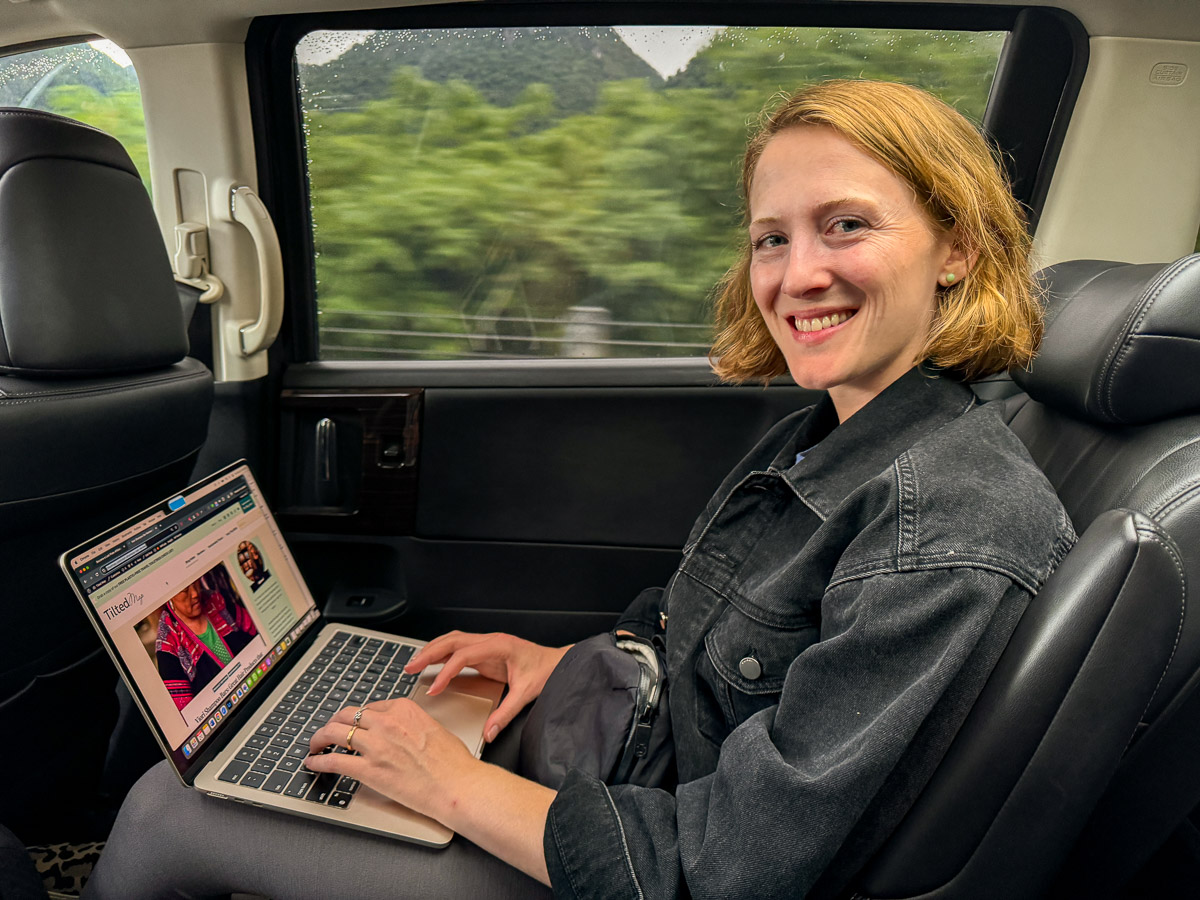
Tilted Map is not for sale
I can’t speak for every blogger, but I can tell you that here on Tilted Map, our opinions are our own.
We don’t accept much sponsored content. (I actually say no to dozens of offers that hit my inbox almost every week.) That’s because our focus is genuine sustainability, for both travel and products, so we’re not going to write or make videos for companies that don’t meet our standards. (Bummer for all the money we’re leaving on the table; yay for the readers who actually trust us and stick around, because we don’t sell out.)
If you’re curious about what that means, I actually gave a talk at a travel blogging conference about what bloggers should look for from genuinely sustainable companies. You can watch it here:
And even when we do accept sponsorship opportunities, even when the companies seem ethical and perfectly aligned with everything we’re looking for, the sponsors do not have editorial control over what we say in any content.
That’s not to say that they wouldn’t like to, sometimes, but I always negotiate this. I never agree to promise a certain type of coverage, whether a company is sending me a “free” shampoo bar or sending me on a “free” trip to China.
Blogging for Free Stuff?
I put “free” in quotes, because if a company is offering me something, they’re expecting something in return. That’s why we pay for most of our travel and most of the products we review. It’s just simpler.
Remember kids, free is never free. And cheap can be very expensive, but that’s a different topic.

What about ads?
I’m also writing this because I recently got an email from a subscriber asking, essentially, “why are there all these annoying ads on your site now?”
Ugh, I hated reading that, and I hate annoying loyal readers even more. And I was really glad they came out and told me instead of just closing the tab and never coming back to my blog again.
That’s why I wanted to pull the curtain back a bit on how blogs make money, how this whole business works, and why I’ve been trying some new things, like ads, for the first time just recently — even though I’ve been blogging since 2014. (I’ve had the name Tilted Map since 2019. But if you want to read some fun, vintage posts, check out my China stories, or this one from Cambodia.)
I certainly could have put ads on this site earlier for an easy paycheck, but I didn’t want to make it look ugly and have the page you’re reading be covered in advertising. Because not all ads are created equal.
Better vs Worse ads
You know those ads you see on local news sites? The ones selling miracle treatments for foot fungus, or telling you how to lose your belly fat? Yeah, those are the worst.
You don’t have to have a well designed, high quality site with a lot of readers to qualify for those ads. Just about anyone with any website could throw those up and earn a few bucks, but they won’t have much control over them, and they’ll look terrible.
I never let anything like that close to my baby. And for a long time, I wasn’t sure I wanted to use any ads on this site at all.
But in 2024, I did finally decide to test out a much higher-quality ad network called Mediavine. (That’s an affiliate link to join their ad network for smaller sites.)
Mediavine ads look better than most, and I get a lot more control over how many to use, and where to place them.
I’ve been testing and tweaking the ads on this site a lot over the past few months, with two goals in mind:
- (Obviously) to make money from the ads, so that I can diversify my incomes streams and make sure I can continue to run this blog while also paying for little treats like groceries and health insurance, and
- (Less obviously) to not annoy readers with excessive ads that are distracting or cover the content you’re here to see. If you’ve been on many blogs or news sites lately, you’ll know that this part is not a goal of every blogger. Maybe website owners do not apparently care about what the tech world calls “UX” – user experience. (Which is wild, because their users literally are the only reason they’re in business.) But I do. So please let me know if you think it’s really not working.
Ads are ubiquitous…
…and not just on the internet. If you look back at any magazine or newspaper from the last, I don’t know, 200 years, you’ll see what I mean. So I figured people are used to them, as long as they’re used in moderation.
My perspective was that if the New York Times and nearly every other website has ads, then I can have them, too. (Hey, I have a degree in journalism, too. Why should I be held to a higher standard than the New York Times?)
But what do you think? Do you hate them? Do you not even really notice them? And if you didn’t like them, does this explanation change the way you think of them?
Would you rather pay a small monthly subscription to use a version of TiltedMap without ads? (That’s an option I’ve considered.🤔)
Why now with the ads?
If you’re wondering why I blogged for a decade before putting ads on my site, the reason, in short, is that the business of creating content online is changing, and I want to make sure I can keep creating.
To be fair, online content creation is an entire industry (worth about $30 billion a year and growing) that’s only been around for about two decades. It’s a baby, so it’s always changing.
Why this business has changed SO much
But since roughly September of 2023, it’s changed even more, thanks to Google, AI, the rise of social media, and the fall of attention spans. Let’s just focus on the first two.
AI uses our work… to put us out of work
In November 2022, ChatGPT was launched to the public. Millions of people decided to stop actually thinking or writing, and stop paying professional writers, and just let a computer do it for them.
(With massive environmental impacts, by the way. Every AI task uses as much as 33 times more energy than a simple Google search or anything else you do online. That means much more CO2 emissions and water use, too. Use it sparingly, please.)
And the internet was flooded with new articles, and even entire websites, entirely written by AI.
But the very phrase “written by AI” is kind of unfair. It’s called “generative” AI because it can generate “new” things.
But how did it learn to generate? By being fed and copying content on the internet written by real people. Including professional writers and bloggers with years of training and experience. None of us ever agreed for these companies to use our work product to create a technology that their human owners would make a gazillion dollars from.
And where’s our paycheck? I checked the mail, but nope, still nothing.

Google Moves the Goalposts
Then, in September 2023, Google search released its “Helpful Content Update,” theoretically, at least in part, to avoid sending people to bad AI websites. But many blogs (including many good ones) suddenly lost 80 to 90% of their monthly traffic.
Basically, Google changed the rules they use for ranking the Google search results you see when you Google something.
They’re tweaking those rules all the time, but this was a particularly big tweak, and it was particularly bad for small websites. It’s the reason why when you Google something, half the results you’ll likely see are now from Reddit – which Google has invested many millions of dollars in.
(Oh, what was the investment for, you ask? For Google to use all those human-written words to train its AI tools. And again, no, none of those millions are going to the people who wrote the words. Just the people who had the idea to steal them.)
But do I have to care?
Let’s put AI aside for a moment. As far as the Google updates and how they affect bloggers, you could read all that and not really think twice about it…
Or you could look at it as yet another example of one of the richest companies in the world narrowing the options for independent voices to be found by people who are interested in hearing them.
So far, somehow, Tilted Map has been mostly spared from the Google update carnage.
Even though the majority of you, dear readers, find me by searching on Google, I didn’t lose traffic in the HCU update. (Thank you, Google gods, if you’re reading this. And of course you are.)
Is that because my content is so genuinely helpful? Well, I like to think so, but honestly it is impossible to know exactly why a site is or is not affected by any algorithm update.
Literally, according to some analysis, even the Google engineers who create the algorithms don’t fully know, because there are so many people, working on so many different parts of the system, that no one person actually knows exactly how it all works. (Maybe that’s a little freaky if you think about it.)
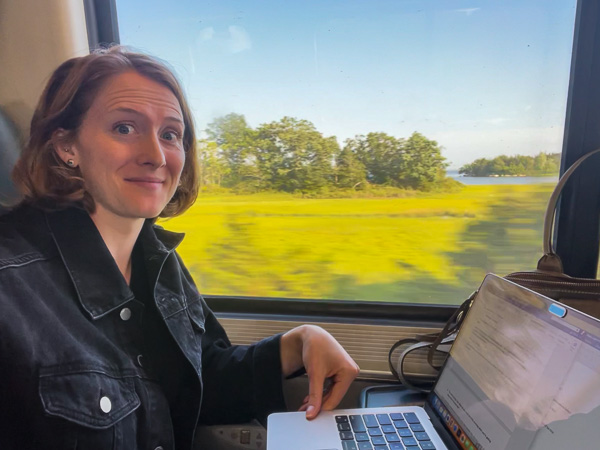
Lessons Learned from Google updates
But even though Tilted Map didn’t fall off a Google cliff, I learned a lot from my many blogger friends who lost their businesses overnight. It was a huge, flashing, neon sign of a reminder that I don’t control everything in this business.
For a couple of years, this blog had made money by a simple formula of:
- Write detailed, useful travel articles and review of sustainable products
- do all the technical things to make sure those articles rank well in Google (AKA SEO – search engine optimization)
- get lots of readers from Google who are already interested in the topics I wrote about
- earn commissions based on my recommendations in those articles
- have no ads
- sell no products directly
- mostly ignore social media
- only occasionally contact my email subscribers (sorry, I love you)
- repeat.
But I realized that I, too, could lose readers instantly. Most of my revenue was coming from affiliate marketing sales (like, far too high of a percentage) and some change to an algorithm could take that away.
You just never know. So I wanted to diversify.
That’s meant lots of changes:
- My husband and I started a YouTube channel! (He’s been making videos for a decade, so it made sense.)
- We started making more short-form videos, too, and posting more often on Instagram. (I actually enjoy the community we’ve built there, and how many questions people ask about sustainability. It feels real and helpful, just like this blog.)
- I started writing emails to my subscribers more often, so that I could directly keep in touch with people who are interested in our content, instead of depending on search engines like Google. (This is really one of my favorite ways to keep in touch and get great feedback on what readers want and need. And it’s free for you! Go ahead, get on the list.)
- And I put ads on the website, to test a new revenue stream. (More baskets for my eggs.)

How to Support Your Favorite Blogger or Influencer ❤️
Since you’ve read this far, I’ll just assume I’m your favorite blogger, and tell you the best ways to support Tilted Map. But I’m 99% sure these apply to just about any blogger, influencer or content creator. (If you happen to know one and you ask them, I’m sure they’ll be absolutely glowing. The questions we get most often are more along the lines of “oh, that’s a job?”)
So please, spread the love for any other creative humans who take the time to share their unique, human perspectives and expertise.
Here are some of the most helpful things you can do to show your support, whether you want to spend money or not spend a dime.
FREE: Engage with our posts (here’s how)
- Email our work to a friend! Probably the absolute most helpful thing you can do is email one of our blog posts, Youtube videos or other content to someone, with a simple note that says – “hey, I think you’d like this.” Maybe add that it was made by someone you know, or by one of your favorite content creators. Say whatever you want, their your friend.
The reason email is at the top of this list is it’s the place where people pay the most attention. It’s personal. If you email someone something, there’s a really good chance they’ll actually look at it. If you send it to them on social media, there’s less of a chance. There are a million studies showing this, but I won’t bore you with them.
- Subscribe to our email newsletters! Then open our emails (even if you don’t have time to read them) and reply to at least one. It can be a one word reply, but the point is to teach your email’s spam filter that our newsletters are NOT spam. Opening and occasionally replying helps immensely with that.
- Follow us on social media! After you follow, make sure you’ll see our posts: Hit the bell for notifications when we post new videos on Youtube. Put us on your favorites list on Instagram and Facebook.
- ENGAGE on social media: Liking a social media post is good, but want to know what really moves the needle? It’s when you comment, share the post, or save it (on Instagram), and subscribe (on YouTube).
- “But what should I comment?” Leaving a genuine thoughtful comment is amazing, but I know SO MANY people who feel weird about that and don’t want to. That’s fine!
- Honestly commenting a few fire emojis (or literally whatever emoji you’re feeling that day) is also super helpful – it’s all about showing the algorithm that this piece of content is important enough for people (YOU) to leave a comment on. So don’t overthink it. 🔥🔥🔥
- Let us know if something is broken. Running a blog or being an influencer is a business, and like most small business owners, we’re absolutely flooded with tasks that need to get done. Sometimes we miss a typo, or a broken link, or something on the website doesn’t seem to be working. TELL US. Just like when the reader emailed me to say they didn’t like the ads on my site – feedback is a huge help. Thank you in advance for taking the time to share it.
- Tell companies that you found them through us. You know those little surveys that often show up after you’ve purchased something online? In the one that says “how did you hear about us?” Answer “from the blog tiltedmap.com” !
NOT FREE
- Use our affiliate links and discount codes if you’re going to buy something we’ve mentioned. I wrote a lot about this above, so I won’t beat a dead horse, but just to reiterate: Using someone’s affiliate link does not make you pay more for a product. Just about every product for sale on the internet has an affiliate program, because the hardest thing for most companies to do is find new customers. So, I hate to say it, but affiliate marketing is built into the price of everything already. (And probably has been, in one form or another, since the dawn of commerce.)
- You can find most of my product recommendations and discount codes here.
- If you’re a blogger, business owner, or person with a website, here are all the blogging tools, plugins, social media courses etc. that I recommend.
- Bonus points: ASK us if we have an affiliate link for a product before you buy. For me personally, there are a ton of products that I’ve tried or been sent, often even liked, but haven’t had time to post about (despite having an affiliate link).
- Book your travel through our links. Travel affiliate links are the same concept. If you’re going to use Kayak or Booking anyway, click through our links to make the purchase you were going to make anyway.
- You can find more of my travel links here. (Some are affiliates, some are not. All are brands I used and recommend. And there are some very valuable discounts, too!)
- Offer to pay for our content. Remember when you had to actually buy a magazine or newspaper to get the content inside it? Now, almost everything we produce is available for free. (And that’s why we have to depend on things like ads and affiliate marketing.) This is one that doesn’t actually apply to Tilted Map right now, but lots of bloggers, writers, video makers, etc. have a Patreon or another way for people to sign up to pay them a monthly fee, usually in exchange for special content you can only get there.
- Question: Is this something you’d be interested in from Tilted Map? If so, what special content would you find useful? Feel free to drop some ideas in the comments or email me.
- Come on trips with us! This is for the overachievers. But honestly, the trips we’ve designed are amazing and we would be honored if you wanted to spend your vacation with us. 😊
Questions about how blogs make money, or anything else in this article? Leave them below in the comments and I’ll answer. (For free.)

Before You Go:
These are few of the most popular posts on this blog that you might enjoy:
- How Italians Stay Thin (Eating Pizza and Pasta All the Time)
- How to Buy Train Tickets in Europe
- A Guide to the Quietest Island for a European Escape (Terceira, in the Azores)
- How These Shampoo Bars Help Support an Indigenous Tribe in China
- This Travel Blog Declares a Climate Emergency (Part 1: What?)

